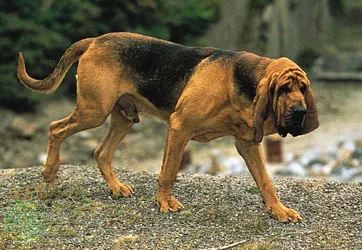- Law: Owners of dogs that have bitten or attacked people or other animals may be declared “dangerous” and subject to certain restrictions. (read full version)
- Explanation:
Title 7: AGRICULTURE AND ANIMALS
Part 9: ANIMAL WELFARE
Chapter 727: DANGEROUS DOGS AND NUISANCE DOGS
§3952-A. Keeping a Dangerous Dog or Nuisance Dog
Maine law under §3952-A establishes clear rules for handling dogs deemed dangerous or nuisance dogs. These regulations are designed to protect the public from dogs that pose a risk of harm or disturbance. Violations of this section can lead to fines and other penalties, which emphasize the seriousness of maintaining control over such animals.
Violations for Keeping Dangerous or Nuisance Dogs
A person found by a court to be the owner or keeper of a dangerous dog or a nuisance dog commits a civil violation. The court will impose a fine of no less than $250 and no more than $5,000, plus associated legal costs. None of these penalties may be suspended. All fines, excluding costs, must be directed to the municipality where the dog resides and placed in the municipality’s animal welfare account. These fines are used to support local efforts in managing and enforcing animal welfare laws.
Procedure for Reporting a Dangerous or Nuisance Dog
Anyone who has been assaulted, threatened, or whose property has been damaged by a dog may file a written complaint within 30 days of the incident. This can be done with the sheriff, local law enforcement, or an animal control officer. The term “domesticated animal” includes, but is not limited to, livestock such as cattle, horses, and poultry.
Once a complaint is made, the authorities will investigate the situation and document the findings. If necessary, the investigator may issue a civil violation summons to the owner or keeper of the dog. Municipalities are required to retain records of the investigation’s outcome for the life of the dog plus two years, ensuring that the dog’s history is well-documented.
Penalties for Keeping a Dangerous Dog
If the court determines that a dog is dangerous, the owner may face several consequences, including:
- Euthanasia: If the dog has killed, maimed, or inflicted serious injury on a person or animal, or if it has a history of dangerous behavior, the court may order euthanasia if the dog presents a clear threat to public safety.
- Restrictions on Dog Ownership: The court may prohibit the owner from keeping any dogs for a specific period, which could be permanent if they have been previously adjudicated for similar violations.
- Posting of Dangerous Dog Signs: The owner may be required to post visible warning signs around the property to alert visitors about the presence of a dangerous dog.
- Confinement: The court may order the dog to be confined in a secure enclosure, a fenced structure designed to prevent the dog from escaping and to keep children or others from entering the enclosure. This may include additional security measures like a secure top or bottom if deemed necessary.
- Leash and Muzzle Requirements: The court may require that the dog be muzzled with a basket-style muzzle and restrained with a leash no longer than 3 feet when outside the secure enclosure. The leash must have a minimum tensile strength of 300 pounds.
- Spaying/Neutering and Microchipping: The court may order the dog to be spayed or neutered and microchipped within 60 days.
- Liability Insurance: The owner could be required to obtain at least $100,000 in liability insurance for the dog’s life.
- Training and Behavior Evaluation: The owner may need to have the dog evaluated by a certified canine behaviorist or trainer and attend training classes.
- Notification to Authorities: If the dog escapes, the owner must immediately notify law enforcement or animal control.
Penalties for Keeping a Nuisance Dog
If the court determines that a dog is a nuisance dog, it will impose a fine and may apply penalties similar to those for dangerous dogs, such as the requirement to leash and muzzle the dog or to confine it. A dog can only be legally classified as a nuisance dog once. However, after two years, the owner may petition the court to reduce or amend the restrictions if they can prove the dog no longer poses a risk.
Identification and Confinement of Other Dogs
In addition to penalties for the dangerous or nuisance dog, the court may order the owner to provide authorities with photos and descriptions of other dogs on the premises. These other dogs may also be subject to confinement, similar to the dangerous or nuisance dog, ensuring comprehensive protection for the community.
Consequences for Failure to Comply with Court Orders
If the owner or keeper willfully fails to comply with a court order, the court may hold them in contempt. If the court orders euthanasia and the owner does not comply, the court may issue a warrant authorizing law enforcement to humanely euthanize the dog. The owner will be responsible for all related costs, including those for seizure and euthanasia.
Immediate Threat to the Public
Before a court hearing, if a dog is deemed an immediate or ongoing threat to public safety, authorities can issue a written order to confine or muzzle the dog. If the owner does not comply, law enforcement may seek an ex parte order to seize the dog and have it confined elsewhere. Failure to comply with this order is a civil violation, punishable by fines of $50 to $200 for each day of noncompliance.
Treble Damages and Class D Crime
If a dog whose owner has failed to comply with a court order wounds a person or another animal, the owner will be required to pay treble damages—three times the amount of damages caused by the dog. Additionally, if the owner refuses to comply with a court order related to the dangerous or nuisance dog, they may be charged with a Class D crime, which could lead to further penalties, including a prohibition on owning or keeping dogs.
Duty to Notify the Municipality
Owners of dogs classified as dangerous or nuisance dogs must notify their municipality in writing within 30 days if they transfer ownership, if the dog moves to a new location, or if the dog dies.
Section History
This section was introduced in 2017 and has been amended to ensure comprehensive measures for dealing with dangerous and nuisance dogs. Updates reflect the need to protect public safety while holding dog owners accountable for maintaining control over their pets.
- Penalties: Failure to comply with dangerous dog laws can lead to fines and, in severe cases, the dog being euthanized.




